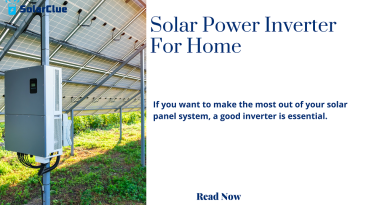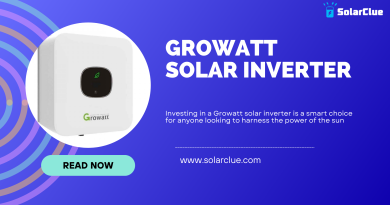Can I Use A Solar Panel To Charge My Phone?
Charging your phone with a solar panel is an eco-friendly and convenient way to keep your device powered, especially when you’re off the grid. This guide will cover the basic components needed for a solar phone charger, the efficiency of solar charging, and tips for optimizing the charging process. We’ll also address common challenges and solutions to ensure you get the most out of your solar charger.
Table of Contents
- 1 The Science Behind Solar Charging
- 1.1 Components Needed for a Solar Phone Charger
- 1.2 Different Types of Solar Chargers Available
- 1.3 Factors Affecting Charging Speed
- 1.4 Solar Phone Charger Types and Their Features
- 1.5 Optimizing Solar Charging Efficiency
- 1.6 Safety Considerations for Solar Phone Charging
- 1.7 The Future of Solar Phone Charging Technology
- 1.8 Comparing Solar Phone Chargers to Traditional Chargers
- 1.9 Conclusion
- 1.10 FAQ Section
The Science Behind Solar Charging
Photovoltaic Effect:
- Solar panels convert sunlight into electricity through the photovoltaic effect. When sunlight hits the solar cells, it excites electrons, generating direct current (DC) electricity.
- This DC electricity is then used to charge a battery or directly power a device, like a phone.
Energy Conversion:
- The efficiency of solar panels in converting sunlight into usable energy varies depending on factors like the type of solar cells, sunlight intensity, and environmental conditions.
Components Needed for a Solar Phone Charger
1. Solar Panel:
The solar panel is the primary component that captures sunlight and converts it into electricity. For phone charging, small portable panels are typically used.
2. Battery:
A battery stores the electricity generated by the solar panel, allowing you to charge your phone even when the sun isn’t shining.
3. Charge Controller:
The charge controller regulates the voltage and current coming from the solar panel to prevent overcharging of the battery and ensure safe charging.
4. Phone Charger:
The phone charger or USB output port connects your phone to the battery or directly to the solar panel, allowing for energy transfer to your device.
Different Types of Solar Chargers Available
Portable Solar Chargers:
- Small, lightweight chargers designed for direct charging of phones and other small devices.
- Often foldable or flexible, making them easy to carry and use on the go.
Solar Power Banks:
- These combine a solar panel with a built-in battery, storing energy for later use.
- They allow for charging multiple devices and provide power even when there is no sunlight.
Standalone Solar Panels:
- Larger panels that can be connected to a separate battery and charge controller system.
- Suitable for more extensive setups or off-grid systems that power multiple devices.
Factors Affecting Charging Speed
Sunlight Intensity:
- Direct, strong sunlight results in faster charging, while cloudy conditions or indirect sunlight slow down the process.
Solar Panel Efficiency:
- Higher efficiency panels convert more sunlight into electricity, speeding up the charging process.
Battery Size:
- The capacity of the battery being charged will affect how long it takes to fully charge your phone.
Temperature:
- Extreme temperatures can reduce the efficiency of solar panels and batteries, affecting charging speed.
Solar Phone Charger Types and Their Features
| Type | Portable Solar Chargers | Solar Power Banks | Standalone Solar Panels |
|---|---|---|---|
| Portability | High | Medium | Low |
| Battery Included | No | Yes | No |
| Charging Speed | Depends on sunlight; slower in low light | Stores energy for faster charging | Fast in direct sunlight |
| Device Capacity | 1-2 devices | Multiple devices | Multiple devices |
| Best Use | On-the-go, hiking, camping | Daily use, emergency power | Off-grid setups, remote locations |
Optimizing Solar Charging Efficiency
Choosing the Right Equipment:
- Panel Size: Choose a solar panel with a higher wattage to charge your phone faster.
- Quality Components: Invest in a reliable charge controller and high-efficiency solar panels for better performance.
Maximizing Sunlight Exposure:
- Positioning: Place the solar panel in direct sunlight and adjust the angle to follow the sun’s path throughout the day.
- Avoid Shading: Even partial shading can significantly reduce the charging speed.
Regular Maintenance:
- Keep Panels Clean: Dust and debris on the solar panel can reduce its efficiency. Clean the panel regularly to maintain optimal performance.
Safety Considerations for Solar Phone Charging
Overcharging Prevention:
- Use a Charge Controller: Always use a charge controller to prevent overcharging and potential damage to the battery and phone.
Temperature Monitoring:
- Avoid Overheating: Protect the battery and solar panel from extreme heat, which can reduce efficiency and lifespan.
Proper Connections:
- Check Connections: Ensure all connections are secure and use the appropriate cables to avoid short circuits or damage.
The Future of Solar Phone Charging Technology
Advancements:
- Improved Efficiency: Ongoing research is focused on developing more efficient solar cells and integrating better energy storage solutions.
- Wireless Charging: Future technology may include solar-powered wireless charging, eliminating the need for physical connectors.
Integration with Devices:
- Solar-Integrated Devices: Some manufacturers are exploring the integration of small solar panels directly into phones or cases, allowing for continuous trickle charging.
Comparing Solar Phone Chargers to Traditional Chargers
Environmental Impact:
- Renewable Energy: Solar chargers use renewable energy, reducing reliance on fossil fuels and lowering your carbon footprint.
Cost Efficiency:
- Upfront vs. Long-Term: While solar chargers may have a higher initial cost, they can save money in the long run by reducing electricity bills.
Portability and Convenience:
- Off-Grid Capability: Solar chargers offer the advantage of being able to charge your phone anywhere, making them ideal for outdoor enthusiasts and travelers.
Conclusion
Charging your phone with a solar panel is an environmentally friendly and practical solution, especially when you’re off the grid. By understanding the components involved, optimizing efficiency, and addressing safety considerations, you can effectively harness solar energy to keep your devices powered. With advancements in solar technology, the future looks bright for even more convenient and efficient solar charging solutions.
Here at SolarClue®, we offer a smart, practical, and “beautiful” solution. You will be answered for all the questions related to Solar.
We provide all kinds of brands that are the Best Solar panels in India.
If you are the one who is planning for the solar power system. Don’t hesitate to contact our team!
Looking forward to empowering you with solar energy, just like hundreds of our other clients!
FAQ Section
1. How long does it take to charge a phone with a solar panel?
Charging time depends on the solar panel’s wattage, sunlight intensity, and battery capacity. On a sunny day, it can take 2-4 hours to fully charge a phone with a 10-15W solar charger.
2. Can I charge my phone directly from a solar panel?
Yes, but it’s recommended to use a solar power bank or charge controller to ensure a stable power supply and prevent overcharging.
3. Do solar chargers work on cloudy days?
Solar chargers work on cloudy days but at a reduced efficiency. It may take longer to charge your phone in low-light conditions.
4. Is it safe to leave my phone charging with a solar panel unattended?
It’s generally safe, especially if you use a charge controller. However, avoid leaving it in direct sunlight for too long, as overheating could occur.
5. What’s the best way to position a solar panel for charging?
Place the solar panel in direct sunlight with an optimal angle toward the sun (usually 30-45 degrees, depending on your latitude) and avoid any shading.


